By Frank Iannamico –

The Colt AR-15 rifle has become one of the most popular, and copied, civilian firearms ever produced. The original Colt AR-15 semi-automatic rifle made specifically for the civilian market first appeared in 1963–1964, a few years prior to its select-fire counterpart, the M16, being issued to the U.S. military in any substantial numbers. During the 1960s, the AR-15 rifle, primarily made of aluminum and plastic, was unique and almost space-age in appearance when compared to traditional rifles like its predecessor the M14, which is made of steel with a wood stock.
The AR-15/M16 rifles became well known to many Americans because of their extensive use in the Vietnam war. Further attention was brought to the weapon due to early problems the rifle encountered in the tropical climate of Southeast Asia, which brought about much negative publicity. During the 1960s, no one could have predicted that it would be the longest-serving primary rifle of the U.S. military (currently in the form of the M4 carbine), or the ever-increasingly popular choice with civilian enthusiasts today.
The small caliber 5.56mm AR-15/M16 rifle was adopted to replace the U.S. M14 rifle that was not well suited to the jungle climate and close combat conditions often being encountered by U.S. forces in Vietnam. Due to its powerful 7.62mm cartridge, it was very difficult to control during full-automatic operation. As a result, most M14s were issued with selector locks, limiting their operation to semi-automatic only. Another problem encountered with the M14 was the size and weight of its 7.62x51mm round, limiting the ammunition load carried by an infantryman. The enemy was primarily armed with an AK rifle, which had full-automatic capability, a 30-round magazine, and due to its smaller midrange 7.62x39mm cartridge, a larger ammunition load could be carried. This gave the enemy a distinct firepower advantage over the U.S. troops armed with an M14 rifle.
Today’s civilian AR-15 rifle, and its many clones, have evolved far from the original design. Although the operation is basically the same, the rifle barely resembles the original issued during the Vietnam era. Gone is the original carry handle built onto the upper receiver, replaced by flat-top upper receivers to accommodate accessory rails, optics, flashlights, and lasers. A large number of adjustable buttstock designs have largely replaced the fixed stocks. The original “lightweight” AR-15/M16 is gone; when fitted with all the modern gizmos and gadgets its weight and girth is similar to the M14 rifle that preceded it.
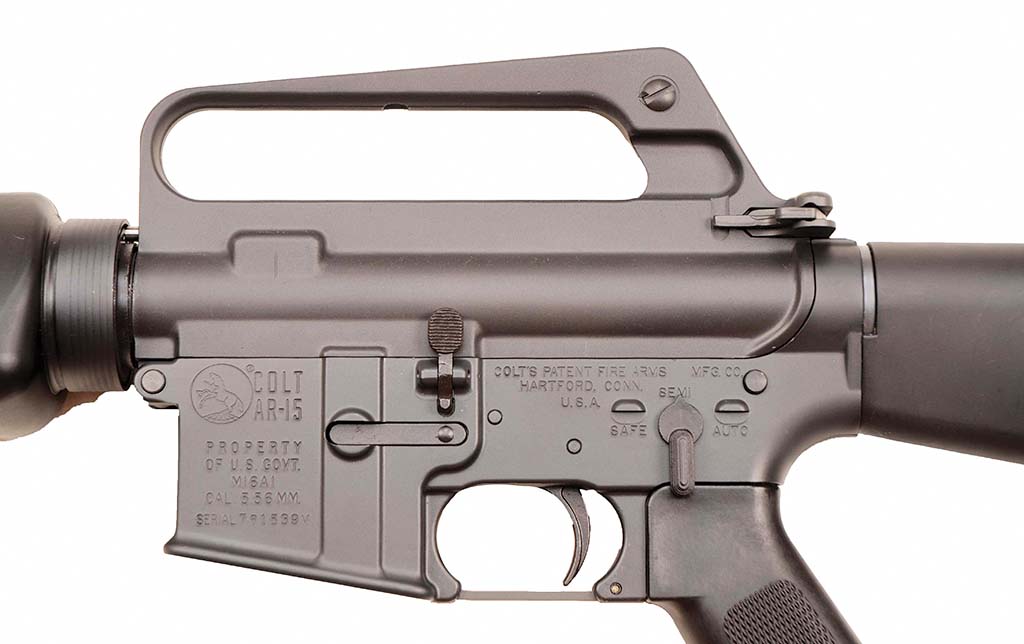
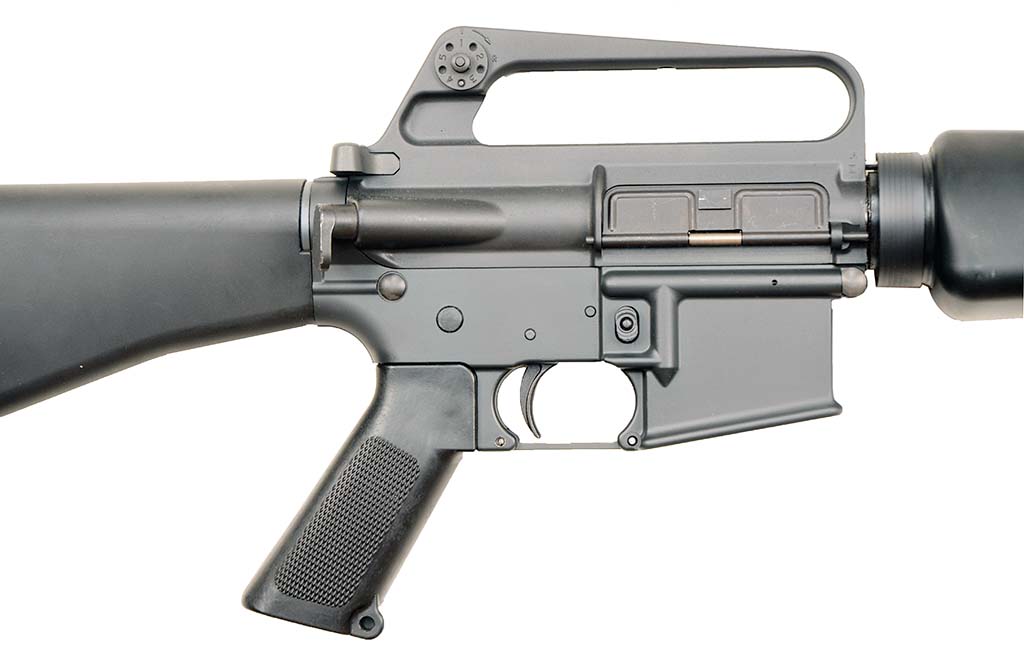
What’s Old is New Again
If you are a fan of muscle cars from the 1960-1970 era, you will have noticed that the trend is to restore them to their original factory condition. Back in the day when those cars were new, the first thing that the owner did was replace the factory wheels, install an aftermarket stereo system, cut the door panels to mount speakers, and modify the engine with aftermarket accessories. In automotive circles, this is known as “day two modifications.” Currently, there is a market for reproduction of original type wheels, air cleaners, and other parts to restore the cars to “factory original.”
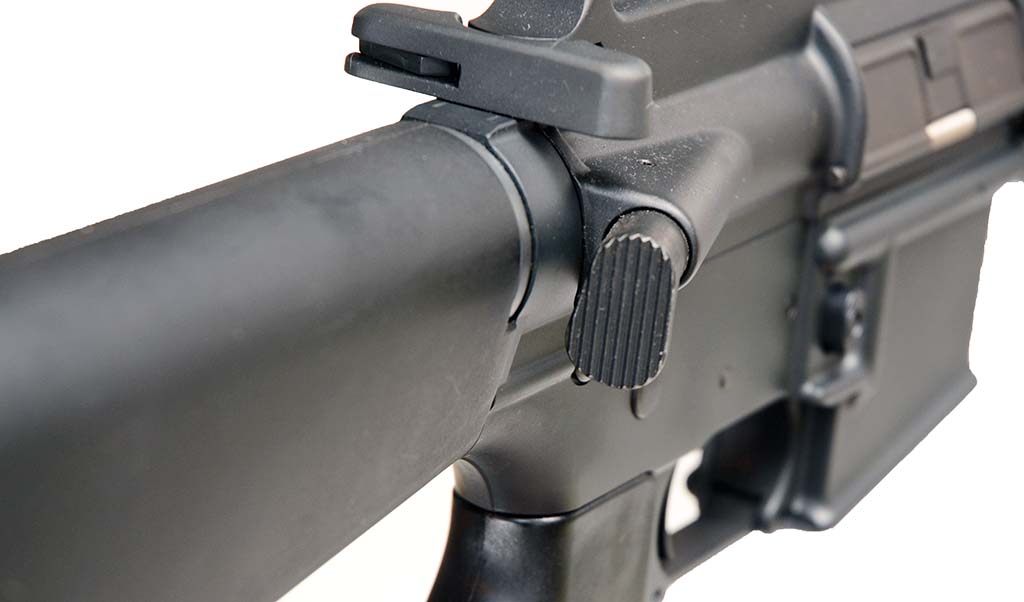
In recent years, Colt’s Military Classic Series, along with Smith and Wesson’s Classic Series, and Brownell’s Retro Series, have reintroduced limited runs of firearm models long out of production. Examples include the 1917 revolver (as the S&W Model 22), the 1911A1 pistol, and original configurations of AR-15/M16 rifles made during the Vietnam war.
Colt’s original semi-automatic AR-15 SP1 model for the civilian market lacked a few features present on its military counterpart. These missing features include lack of a forward assist, no protective “fence” around the magazine release button, no “eyebrows” to restrict travel of the selector, the selector markings, and last but certainly not least, was the large hole and screw in place of a front pushpin. Although seemingly trivial to some, the missing M16-type features were important to many more. Other early manufacturers that made AR-15 copies included such features making their products more attractive to buyers.

The exclusive owner of the “AR-15” designation belongs to Colt and cannot be used by other manufacturers. However, the term AR-15 is commonly used by the firearms community to describe the rifles irrespective of who manufactured them. There are a large number of AR-15 “type” rifle manufacturers, and that number is growing. Currently, there are over 300 companies offering clones of the AR-15.
AR-15/M16A1 Retro Series Vietnam War Collection
Today a prospective buyer would be hard-pressed to find a newly manufactured AR-15 rifle, or clone, with a fixed carry handle, triangle handguards and other early features. This brings us to the subject of this article: Colt’s Retro AR-15/M16A1 rifle.
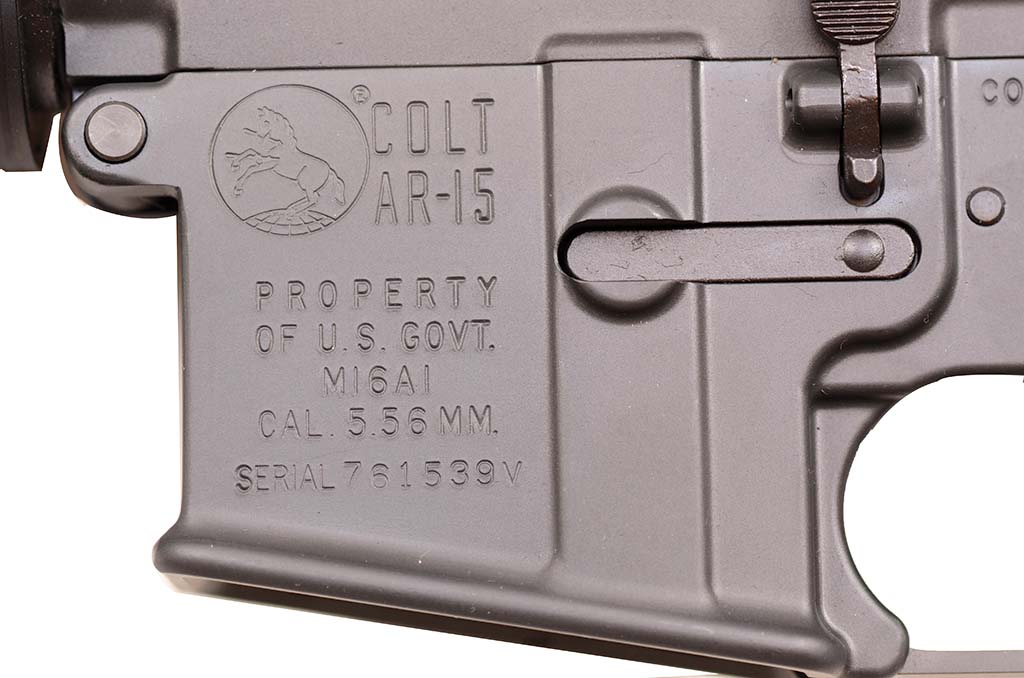
Introduced in 2017, Colt’s limited edition, semi-automatic AR-15/M16A1 Retro Series Vietnam War Collection Rifles made their debut at Shot Show. This series offered a replica of a Vietnam Era M16A1 standard issue rifle, and a replica of the XM177E2 Colt model 629 carbine. The 11.5-inch barrel of the XM177E2 retro carbine has an extended moderator designed to both simulate the original and extend the barrel to a legal 16-inch length. The two-position buttstock is the same vinyl-acetate-coated aluminum fitted to the original carbines.
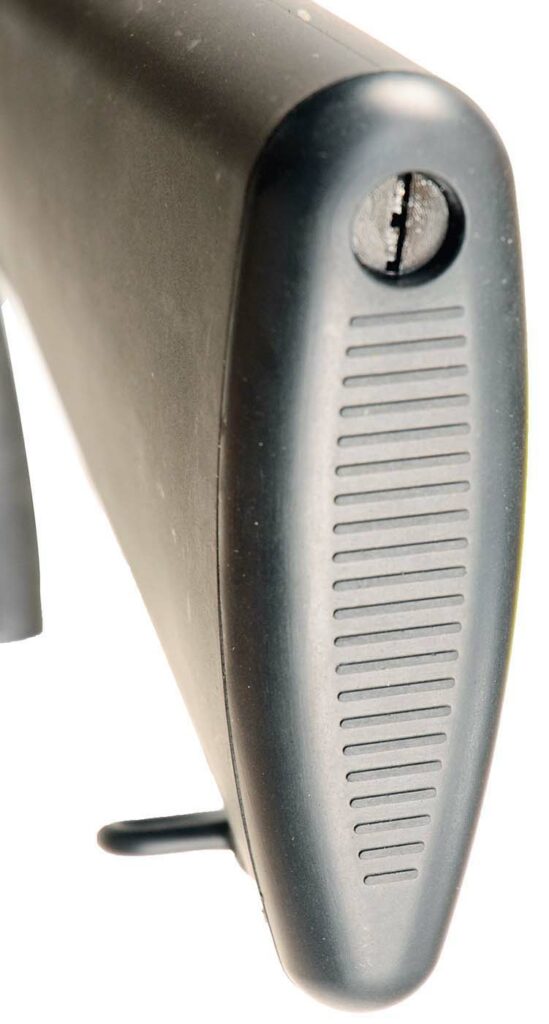
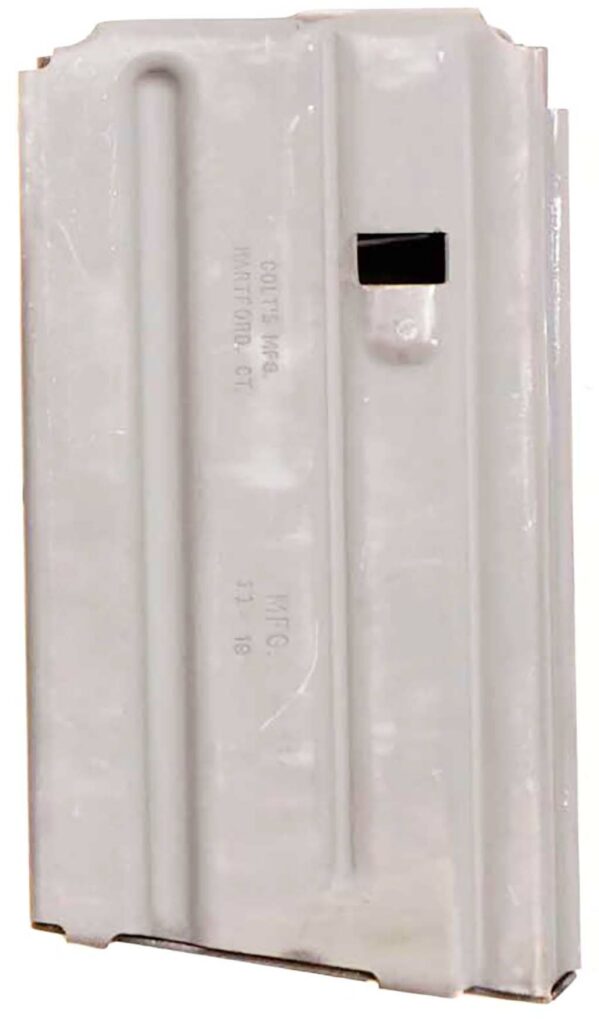
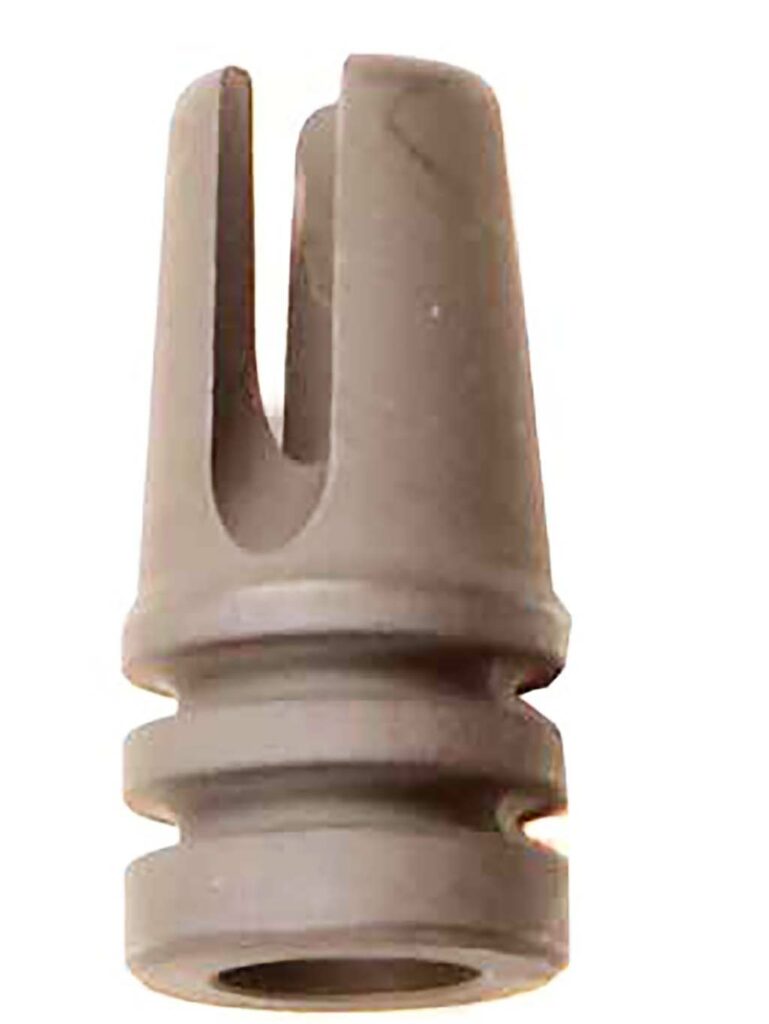
What is appealing to collectors are the features and markings on the rifles replicating those issued to military personnel during the Vietnam War. The rifle has the M16A1 style upper with the fixed carry handle, teardrop forward assist, and A1 type front and rear sights. The ejection port door is period correct. Handguards are the era triangle style with the proper slip ring; the buttstock lacks a trap door and has a moveable sling swivel. The gray anodizing on the upper and lower receivers is period correct.
One of the more desirable features of the Retro AR-15/M16A1 rifles is the lower receiver markings. The left side of the receivers are roll-marked like 1967-1968 military issue M16A1 rifles with the Colt trademark, AR-15, under that is PROPERTY OF U.S. GOVT. M16A1; CAL 5.56MM, and a serial number that is similar to those rifles issued during the Vietnam war with the exception of a letter “V” suffix representing Vietnam. The selector markings are SAFE SEMI and AUTO, although there is no actual auto feature, and the selector cannot be rotated to the AUTO position. Above the selector is Colt’s factory information marked the same as it appeared on the weapons during the 1960s. The rifle featured for this article came fitted with a “birdcage” flash hider, an earlier “prong” type flash hider is included if that style is desired.
The production of the AR-15/M16 Reissue series was limited to 2500 rifles. Despite their obvious collector interest; there have been a few Internet criticisms of the rifles, primarily because of their suggested retail price of $2499.00, which admittedly is rather steep for a semi-automatic AR-15. Other negative remarks include: the black carry sling(a correct Vietnam issue sling would be OD cotton, or the later issue OD mildew-resistant nylon sling); and the included 20-round magazine, which would be correct for the period except that the reproduction has a modern plastic follower. Other negative comments were directed at the lack of typical Colt proof/inspection markings on many parts, such as the barrel, bolt and bolt carrier, and the finish color of a few small parts like the flash hider, slip ring, and ejection port door.
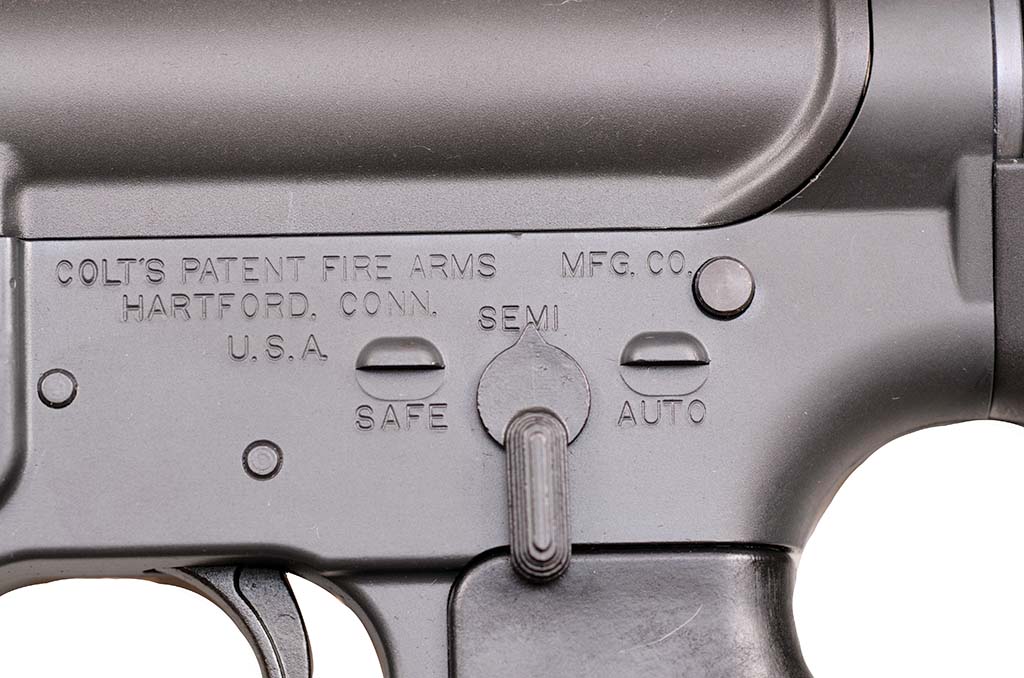

An internet search of some popular websites revealed that new, in-the-box Colt M16A1 Retro Reissue rifles can still be found, although the XM177E2 carbine version is more difficult to locate. While pricey, these rifles are accurate representations of their Vietnam-era predecessors, and are very likely to increase in value.
Sales Restrictions include: California, Colorado, Connecticut, Massachusetts, Maryland, New Jersey, New York, Vermont, and Hawaii
| This article first appeared in Small Arms Review V25N4 (April 2021) |












